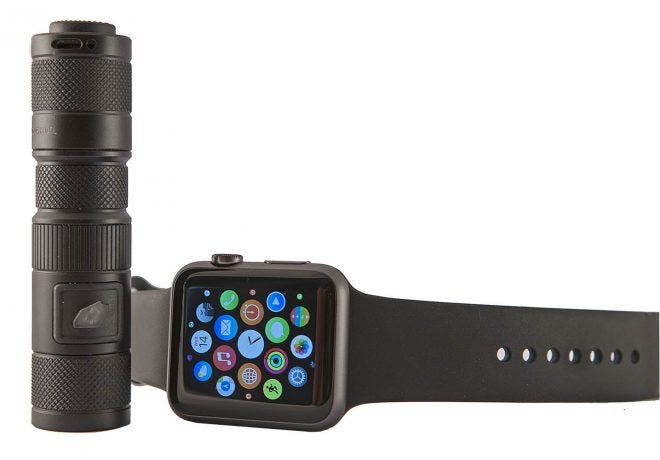One to Watch: Foursevens Quark Smart QSL
Tony Sculimbrene 05.04.16

There have attempts at programmable flashlights before. From things like the legendary and uber rare Indium Smart, to any number of modern lights from NexTorch. In the end they all suffer from one problem: they are difficult to program. You have to install software, fix drivers, blah, blah, blah. It’s like adding a printer to your computer but with crappy software. Add to this the fact that none were truly programmable on the fly and it is easy to see why they haven’t really taken off (despite some ridiculous hype when the Indium hit the market. Gizmodo and Engadget covered its release).
But the promise of programmability is, seemingly, the next evolutionary step when going from single mode to multimode to infinite variable brightness. It seems like something that should be possible. And if you are a person into flashlights enough to read Internet articles about them then you know why very few, EXCEEDINGLY few, flashlights have output modes selected exactly the way you want them. Inevitably, something is too bright or too dim. But with programmability you just set everything to your preference and go from there. The need (and I use that term loosely) is there, even if the actual end user experience isn’t.
Maybe that problem is over.
In late November FourSevens unveiled a barrage of new lights, including the hideous and pretty dreadful Paladin/Knight series. Among all of the spangles of the Paladin, there was the Quark QSL. This is a regular 1xCR123a Quark, a light known and loved by flashaholics everywhere, updated with a feature that might unlock the promise of true programmability. This is a light that is Bluetooth enabled, capable of pairing with your iOS device, and has a companion app.
The app will allow users to check battery life, select different interfaces, and set proximity detection for remote use. It’s not necessarily true output selecting programmability, but it is very close. The app is very user friendly and is free on the App Store. There is an Android app coming as well (Chow noted that the notorious problems with Android BT protocols made it difficult to port the app).
The app can show you the amount of battery life left, the runtime remaining with the most recent output level, the current mode being used, and it can be used to switch modes (though I am unsure how that would be useful) and set a proximity detector that turns the light on when it gets near your phone. The big feature is that the app allows you to select between three interfaces: a tactical interface with high first, a normal interface with low first (called Pro), and an infinite variable brightness mode. Again, it’s not true output selectability, but it is very, very close.
The Quark Smart that is currently available, the Crx123a version, is the first of a series. There will be 2xAA, 2xCr123a coming. Hopefully iterations on the app will bring true programmability without the need for a computer, a horrible piece of software, and weird cables. As it is the Quark Smart is appears to have lots of interesting features. Fortunately, you don’t need any of them if you don’t want them. It works just like a regular Quark if you don’t bother with the app.
Ever closer to the promise of full useful programmability.